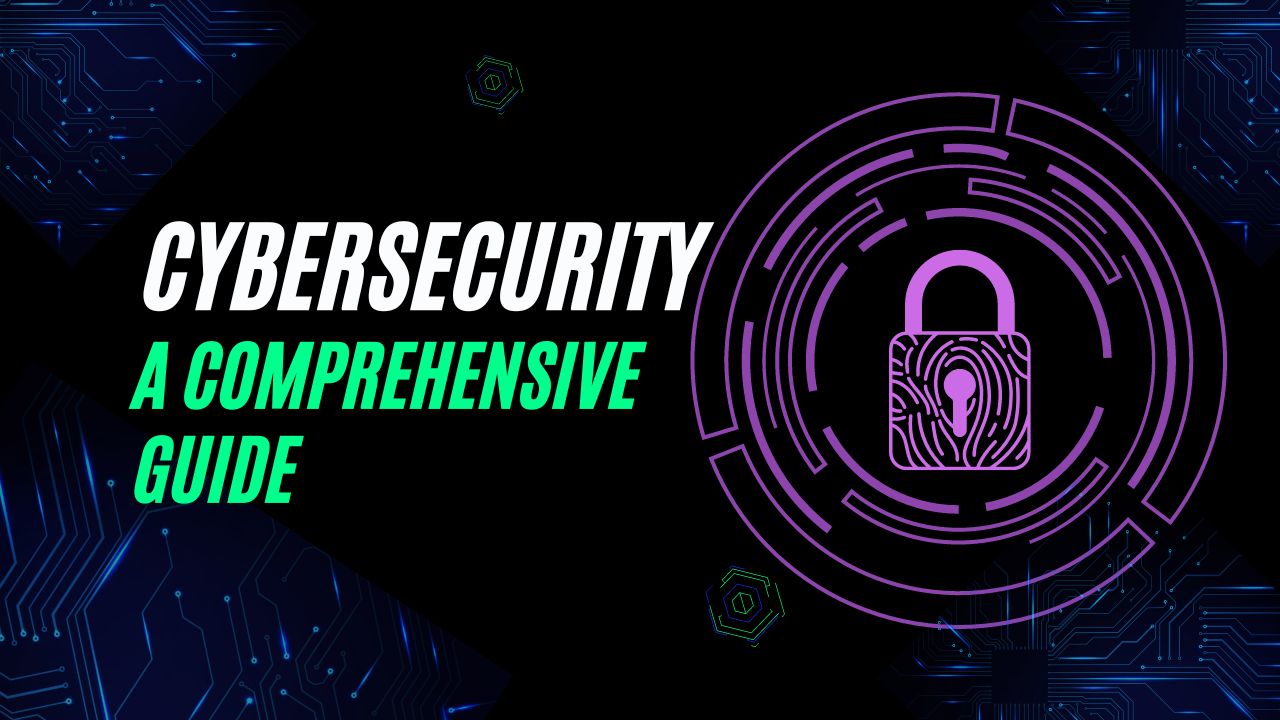The importance of cybersecurity cannot be overstated at present. With the proliferation of digital technologies and the rise of cyber threats, businesses, governments, and individuals alike must prioritize cybersecurity to protect sensitive information, prevent data breaches, and ensure the integrity of digital assets. In this comprehensive guide, we delve into the multifaceted landscape of cybersecurity, exploring its core principles, job opportunities, industry trends, and the critical role it plays in safeguarding our digital future.
Cybersecurity Fundamentals
Cybersecurity encompasses a broad range of practices, technologies, and processes aimed at protecting computer systems, networks, and data from unauthorized access, cyberattacks, and data breaches. It involves implementing robust security measures, including firewalls, encryption, multi-factor authentication, and security policies, to mitigate cyber risks and safeguard digital assets.
Exploring Cybersecurity Career
The field of cybersecurity offers diverse career opportunities for professionals with varying levels of expertise and experience. From entry-level positions such as cybersecurity analysts and incident responders to senior roles like chief information security officers (CISOs) and security architects, cybersecurity careers span a wide spectrum. These roles involve tasks such as threat detection, vulnerability assessment, incident response, and security policy development, offering competitive salaries, career advancement opportunities, and the satisfaction of protecting organizations from cyber threats.
Navigating Cybersecurity Certifications
Certifications play a crucial role in validating the skills and expertise of cybersecurity professionals. Industry-recognized certifications such as Certified Information Systems Security Professional (CISSP), Certified Ethical Hacker (CEH), CompTIA Security+, and Certified Information Security Manager (CISM) demonstrate proficiency in key cybersecurity domains, including risk management, threat detection, and incident response. Pursuing these certifications can enhance career prospects, credibility, and expertise within the cybersecurity field.
Implementing Network Security Measures
Network security is a critical component of cybersecurity, focusing on protecting computer networks from unauthorized access, malware, and cyberattacks. Robust network security measures include firewalls, intrusion detection and prevention systems (IDPS), virtual private networks (VPNs), and secure access controls. These measures help prevent unauthorized access, detect and mitigate network-based attacks, and ensure the confidentiality and integrity of data transmitted over networks.
Harnessing Cyber Threat Intelligence
Cyber threat intelligence (CTI) involves gathering, analyzing, and disseminating information about cyber threats and adversaries to proactively defend against potential attacks. By monitoring threat actors, tactics, techniques, and procedures (TTPs), CTI enables organizations to anticipate emerging threats, prioritize security investments, and strengthen their cyber defences. Leveraging threat intelligence platforms and sharing information through initiatives like the Cybersecurity Information Sharing Act (CISA) enhances collective defence capabilities and fosters collaboration across the public and private sectors.
Leading Cybersecurity Companies and Solutions
Several leading cybersecurity companies are at the forefront of innovation, developing cutting-edge solutions to combat cyber threats effectively. Companies such as IBM Security, Symantec, Palo Alto Networks, Cisco Systems, and Fortinet offer a diverse portfolio of cybersecurity products and services, including next-generation firewalls, endpoint protection platforms (EPP), security information and event management (SIEM) systems, and threat intelligence platforms. These solutions help organizations detect, prevent, and respond to cyber threats while maintaining compliance with regulatory requirements and industry standards.
Anticipating Future Cybersecurity Trends
The future of cybersecurity is shaped by emerging technologies, evolving threat landscapes, and regulatory developments. Trends such as artificial intelligence (AI) and machine learning (ML) are increasingly integrated into cybersecurity solutions to automate threat detection, analyze vast amounts of security data, and enhance incident response capabilities. Quantum computing, although still in its infancy, has the potential to revolutionize cryptography and security protocols, necessitating proactive measures to prepare for quantum-resistant encryption standards. Additionally, the rise of cloud computing, Internet of Things (IoT) devices, and interconnected ecosystems introduces new attack vectors and security challenges, requiring innovative approaches to risk management and security posture.
Cybersecurity is a dynamic and evolving field that plays a critical role in safeguarding our digital future. By understanding cybersecurity fundamentals, pursuing relevant certifications, implementing robust security measures, and staying abreast of emerging trends, organizations can effectively mitigate cyber risks and protect their digital assets against evolving threats. Together, we can build a resilient and secure digital ecosystem where trust, integrity, and confidentiality are upheld, ensuring a safer and more secure digital future for future generations.
FAQs (Frequently Asked Questions) about Cybersecurity
1. What is cybersecurity?
- Cybersecurity refers to the practice of protecting computer systems, networks, and data from cyber threats, including unauthorized access, data breaches, and cyberattacks. It involves implementing robust security measures and protocols to mitigate risks and safeguard digital assets.
2. Why is cybersecurity important?
- It is essential for protecting sensitive information, preventing data breaches, and ensuring the integrity of digital assets. In today’s interconnected world, where cyber threats are constantly evolving, cybersecurity plays a critical role in safeguarding businesses, governments, and individuals from cyberattacks and malicious activities.
3. What are some common cybersecurity career paths?
- Common cybersecurity career paths include cybersecurity analysts, security engineers, penetration testers, incident responders, security architects, and chief information security officers (CISOs). These roles involve tasks such as threat detection, vulnerability assessment, incident response, and security policy development.
4. How can I start a career in cybersecurity?
- To start a career in cybersecurity, individuals can pursue relevant education and training, such as cybersecurity degree programs, certifications, and hands-on experience through internships or entry-level positions. Gaining proficiency in key cybersecurity domains, such as network security, threat detection, and risk management, is essential for career advancement in the field.
5. What certifications are available in cybersecurity?
- There are several industry-recognized certifications available in cybersecurity, including Certified Information Systems Security Professional (CISSP), Certified Ethical Hacker (CEH), CompTIA Security+, Certified Information Security Manager (CISM), and Certified Information Systems Auditor (CISA). These certifications validate expertise in specific cybersecurity domains and enhance career prospects within the field.
6. How can organizations enhance their cybersecurity posture?
- Organizations can enhance their cybersecurity posture by implementing robust security measures and best practices, such as network segmentation, encryption, multi-factor authentication, regular security assessments, employee training, and incident response planning. Additionally, leveraging cybersecurity solutions from leading vendors and staying informed about emerging threats and trends is crucial for maintaining a strong cybersecurity posture.
7. What are some emerging trends in cybersecurity?
- Emerging cybersecurity trends include the incorporation of artificial intelligence (AI) and machine learning (ML) into security solutions to automate threat detection and response, the adoption of quantum-resistant encryption standards to prepare for quantum computing advancements, and the proliferation of cloud computing, Internet of Things (IoT) devices, and interconnected ecosystems, all of which introduce new attack vectors and security challenges.
8. How can individuals protect themselves from cyber threats?
- Individuals can protect themselves from cyber threats by practising good cyber hygiene, such as using strong, unique passwords, enabling multi-factor authentication, keeping software and operating systems updated, avoiding suspicious links and attachments, and being cautious when sharing personal information online. Additionally, using reputable antivirus software and staying informed about common cyber threats can help individuals stay safe in the digital realm.



